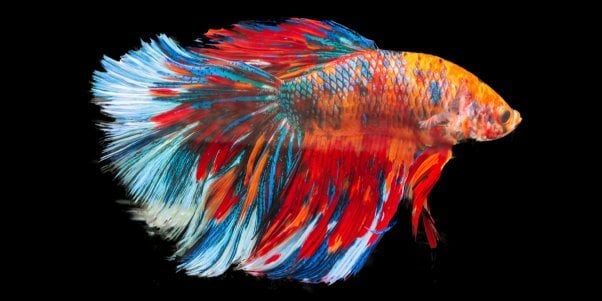All About Betta Fish: Recognizing Their Distinct Demands, Behavior, and the Ideal Practices for Optimal Care
Recognizing the distinct demands and behaviors of Betta fish is crucial for any aquarist aiming to offer optimum treatment. These captivating animals, belonging to the warm waters of Southeast Asia, show distinct territorial tendencies and call for specific environmental problems to flourish. From picking the right tank size to acknowledging possible health problems, numerous variables considerably affect their well-being. As we check out these aspects better, the implications for both beginner and knowledgeable fish caretakers come to be increasingly apparent, increasing inquiries concerning how best to accommodate these exceptional fish in our homes.
Betta Fish Review
Although usually appreciated for their vivid shades and streaming fins, Betta fish, clinically understood as Betta splendens, are complicated creatures that require particular like thrive. Originating from Southeast Asia, these freshwater fish are understood for their territorial nature and one-of-a-kind behaviors. Betta fish show sex-related dimorphism, with males displaying more dazzling shades and longer fins than women.
Their aggressive propensities, specifically amongst males, necessitate mindful factor to consider when housing them. Bettas are frequently kept in single-specimen containers to stop territorial conflicts. They can exist together in harmony with specific suitable species in larger community tanks, gave the atmosphere meets their requirements.

To ensure optimal care, aquarists need to recognize their one-of-a-kind behavior traits, dietary requirements, and habitat requirements. betta fish. With proper interest, Betta fish can show their dynamic characters and thrive in a well-kept fish tank setup
All-natural Habitat and Atmosphere
Betta fish prosper in a varied series of natural environments, largely discovered in the shallow waters of Southeast Asia, including rice paddies, swamps, and slow-moving streams. These settings are identified by cozy temperatures, generally in between 75 ° F and 82 ° F(24 ° C and 28 ° C ), and a pH degree ranging from 6.5 to 7.5, which is perfect for their health and health.
In their natural environments, Betta fish are accustomed to thick plants, supplying both shelter and reproducing grounds. The presence of plants such as drifting water lilies and thick turfs not just uses defense from killers however also adds to the oxygenation of the water, which is necessary for their breathing demands. Furthermore, these environments usually have areas of still water, allowing Betta fish to display their all-natural actions such as bubble nesting.
Recognizing Read More Here the natural environment of Betta fish is essential for fish tank enthusiasts. Reproducing these conditions-- with water temperature, pH equilibrium, and the inclusion of online plants-- can significantly improve the overall health and wellness and longevity of these fascinating fish, guaranteeing they flourish in a home fish tank setting.
Social Habits and Communications
Recognizing the social actions and communications of Betta fish is necessary for effective fish tank monitoring. Betta fish, or Siamese combating fish, are known for their unique behavioral characteristics, defined mostly by territoriality and aggressiveness.
Alternatively, female Bettas display less aggressive behavior and can exist together in groups, referred to as sororities, if introduced properly. It is essential to monitor their communications very closely, as power structure and prominence can lead to disputes. Comprehending the dynamics within a Betta community is vital; developing concealing places and making sure adequate space can mitigate aggression.
In enhancement, Betta fish might likewise display inquisitiveness and social behaviors towards various other types. While they can coexist with particular non-aggressive container companions, it is important to choose suitable types to prevent tension and aggressiveness. Generally, acknowledging these social communications is crucial to fostering an unified aquarium environment for Betta fish.
Crucial Treatment Standards
Giving proper treatment for Betta fish is essential to their wellness and well-being. Routine water adjustments-- roughly 25% regular-- assistance keep water quality.
Betta fish need an ideal tank size; a minimum of 5 gallons is advised to provide appropriate room for swimming and hiding. Include designs and plants to create a stimulating environment, however stay clear of sharp objects that could hurt their fragile fins.

Last but not least, make sure the storage tank is geared up with a filter to keep the water tidy, yet make use of a mild filter to avoid strong currents that can emphasize the fish. By complying with these vital care standards, proprietors can promote a healthy and balanced and vibrant Betta fish.
Common Health And Wellness Issues and Solutions
In the treatment of Betta fish, understanding of common health and visit our website wellness issues is crucial for preserving their health. To treat fin rot, improve water problems and consider using a broad-spectrum antibiotic.
An additional common condition is ich, a parasitic infection defined by white spots on the original source the fish's body (betta fish). Treatment entails enhancing water temperature level and including aquarium salt to the container, as this can help get rid of the bloodsucker
Swim bladder disorder is likewise regularly observed, resulting in buoyancy issues. This problem may emerge from overfeeding or bowel irregularity. A fasting period of 24-48 hours, complied with by a diet plan of blanched peas, can give relief.
Finally, bettas might struggle with velvet illness, shown by a gold dust-like appearance on their skin. Treatment commonly requires medicine particularly made for external parasites, together with boosted tank hygiene.
Routine tracking of water parameters, preserving a tidy setting, and providing a balanced diet plan are vital safety nets. By dealing with these health and wellness problems immediately, Betta fish can lead much healthier, extra vibrant lives.
Conclusion
In summary, successful betta fish care requires an understanding of their unique needs and behaviors. Providing a suitable setting, consisting of ideal container dimension and water problems, is crucial for their health. In addition, identifying their territorial nature and making sure appropriate hiding areas can avoid hostility. Regular tracking of wellness and water top quality, along with a well balanced diet regimen, adds to the durability and vibrancy of betta fish. Complying with these standards will certainly promote a flourishing aquatic ecosystem for these exciting animals.